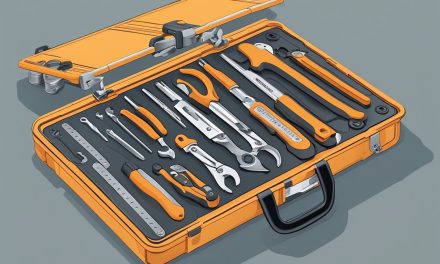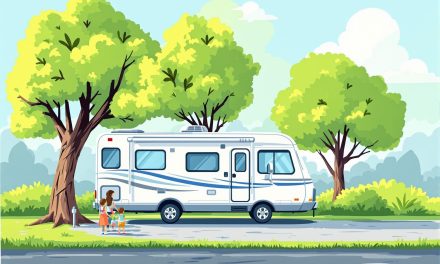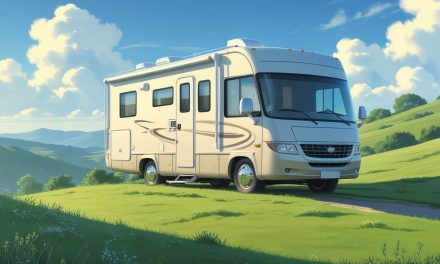Would you like to save this article?
Starting your full-time RV adventure sounds like a dream come true, but seasoned RVers know that costly mistakes can quickly turn your dream into a financial nightmare.
After three years of full-time RVing, Mike and Tony from “Our RV Sunsets” have learned some expensive lessons that could save you thousands of dollars and countless headaches.
From buying the wrong rig to storage disasters that drain your bank account, these seven mistakes are more common than you might think.
You don’t have to learn these lessons the hard way – let’s explore what experienced RVers wish they had known before hitting the road. By understanding these pitfalls ahead of time, you can make smarter decisions and enjoy your RV lifestyle without the costly regrets.
1. Buying Your First RV Brand New (Instead of Used)
💰 The Cost: RVs depreciate 10-20% in the first year alone, with total depreciation reaching 36-38% after five years. On a $100,000 RV, that’s up to $38,000 in lost value!
Your excitement about starting RV life might tempt you to buy that shiny new rig, but this decision could cost you tens of thousands of dollars. Mike and Tony from “Our RV Sunsets” learned this lesson with their first Grand Design Imagine 2500 RL travel trailer. While they loved the trailer and it met 80% of their needs, buying new meant taking a massive depreciation hit when they upgraded after their first year.
The real problem isn’t just the money – it’s that you don’t truly know what you need in a full-time rig until you’ve lived in one. That first year teaches you everything about your space requirements, storage needs, and lifestyle preferences.
💭 Reality Check: Here’s the thing that’ll make you chuckle (and cry): You’re basically paying premium prices to be a beta tester for your own life. It’s like buying a wedding dress before you know your size – sure, it might work out, but you’re probably going to need alterations… expensive ones.
Smart Alternative: Buy your first RV used, learn what you really need, then upgrade with confidence. You’ll save money on depreciation and gain invaluable experience.
2. Undersizing Your Truck (The Expensive Upgrade Trap)
💰 The Cost: Mike and Tony paid $18,000 to essentially “rent” a 3/4-ton truck for one year before upgrading to the 1-ton they actually needed.
Truck shopping for RV towing is where many new RVers make expensive miscalculations. The couple initially bought a 3/4-ton truck, thinking they’d never upgrade to a fifth wheel because of their video production business needs. However, after discovering the Gen Y gooseneck hitch system, fifth wheel towing became possible, but their truck was no longer adequate.
RV Towing Guide:
| RV Type | Recommended Truck | Average Price Range |
|---|---|---|
| Travel Trailers (under 8,000 lbs) | 1/2-ton pickup | $35,000 – $60,000 |
| Large Travel Trailers/Small 5th Wheels | 3/4-ton pickup | $45,000 – $75,000 |
| Large 5th Wheels/Heavy Trailers | 1-ton pickup (diesel recommended) | $55,000 – $85,000+ |
💭 Reality Check: It’s like buying shoes for a growing teenager – you know they’re going to outgrow them, but you buy the exact size anyway. Then you act surprised when you need bigger shoes six months later. Your RV dreams have a funny way of growing bigger than your initial truck purchase!
Smart Alternative: Buy more truck than you think you need initially. Consider your potential upgrade path and buy the 1-ton diesel from the start if there’s any chance you’ll want a larger RV later.
3. The Storage Unit Money Pit
💰 The Cost: Average storage unit costs range from $270-$470 per month. Over 2-3 years, you could spend $10,000-$17,000 just on storage fees – enough to buy all new furniture!
One of the most emotionally and financially draining mistakes is putting your household belongings in storage “just in case” RV life doesn’t work out. Mike and Tony’s storage costs escalated from $270 to $470 per month over time, creating a massive ongoing expense that provided no real value.
Storage Cost Breakdown:
| Storage Unit Size | Average Monthly Cost | 3-Year Total Cost |
|---|---|---|
| 10×15 ft | $150-$250 | $5,400-$9,000 |
| 10×20 ft | $200-$350 | $7,200-$12,600 |
| 10×30 ft | $270-$470 | $9,720-$16,920 |
The psychological attachment to “stuff” keeps many RVers paying these fees month after month, year after year. Most items in storage are never retrieved and could be replaced for less than the storage costs.
💭 Reality Check: Storage units are like gym memberships for your furniture – you keep paying the monthly fee while convincing yourself you’ll definitely use it someday. Meanwhile, your grandmother’s china set is getting more expensive by the month, and it’s not even gaining value like a fine wine!
Smart Alternative: Sell, donate, or give away 90% of your belongings. Keep only true family heirlooms (and call the next generation first to see if they even want them!). Use the smallest storage unit possible for truly irreplaceable items.
4. Choosing the Wrong Mail Forwarding Service
💰 The Cost: Poor mail service can cost you $200-$500 in overnight shipping fees, missed payments, and service complications throughout the year.
Mail forwarding might seem like a minor detail, but choosing the wrong service creates ongoing headaches and unexpected expenses. Mike initially chose Good Sam’s Florida-based service mainly because they offered check depositing, but this feature became unnecessary as most payments switched to direct deposit.
The real problems arose when they tried to use family for some mail forwarding, creating a complicated feedback loop that became a “great big giant cluster” when family circumstances changed.
💭 Reality Check: Mail forwarding services are like dating apps – the first one you swipe right on might seem perfect until you discover they have some really annoying habits. Suddenly you’re stuck in a complicated relationship with your mail that makes you question all your life choices.
Popular Mail Forwarding Services:
- Dakota Post: Handles vehicle registration and residency
- Escapees Mail Service: Oldest and largest RV mail service
- Good Sam Club: Offers check depositing but may be unnecessary
- MyRVMail: Budget-friendly option starting at $99/year
Smart Alternative: Research mail forwarding services thoroughly before choosing. Consider services like Dakota Post that handle multiple needs including vehicle registration and residency establishment.
5. Skipping the Washer and Dryer
💰 The Cost: RV park laundry facilities typically cost $3-5 per load (wash and dry), adding up to $200-400 annually, plus the time and stress costs.
This mistake might seem minor, but it creates ongoing stress that can seriously impact your RV enjoyment. Tony’s passionate rant about RV park laundry facilities in the video shows just how frustrating this daily necessity becomes without your own equipment.
The problems with RV park laundries include:
- Unpredictable availability
- Varying payment systems (quarters, apps, cards)
- Different quality and cleanliness standards
- Time scheduling around other users
- Potential for lost or damaged clothing
💭 Reality Check: Doing laundry in RV parks is like playing Russian roulette with your underwear. You never know if you’ll find working machines, if someone will steal your clothes, or if you’ll be doing the “walk of shame” back to your RV in yesterday’s outfit because the dryer ate your quarters and gave you nothing but damp disappointment.
Smart Alternative: Prioritize RVs with washer/dryer hookups or invest in a good combo unit. Your sanity and time are worth the extra cost and space requirements.
6. Being Too Antisocial (Missing the Community)
💰 The Hidden Cost: Missing out on the RV community means losing valuable advice, safety tips, and support that could save you thousands in mistakes and repairs.
This mistake doesn’t cost money directly, but it costs you one of the greatest benefits of RV life – the incredible community. Tony’s natural introversion initially made her resistant to meeting other RVers, but these connections became some of their most valuable relationships.
The RV community provides:
- Practical advice and troubleshooting help
- Safety through shared experiences and warnings
- Emotional support during challenges
- Lifelong friendships and travel companions
- Local knowledge and recommendations
💭 Reality Check: Being antisocial in the RV world is like going to a potluck and only eating what you brought. Sure, your casserole might be decent, but you’re missing out on discovering that your neighbor makes the world’s best chili and actually knows how to fix that weird noise your slide-out has been making.
Featured RV Community Channels & Friends:
- K Camping with the Coners (Mike and Shelley)
- This Is Our Adventure (Joel and Tanya)
- Adventure Brewing (Stephanie and Curtis)
Smart Alternative: Push yourself to meet other RVers, even if you’re naturally introverted. Attend RV rallies, join online communities, and say yes to meetup invitations.
7. Poor Travel Pacing and Setup Strategy
💰 The Cost: Poor pacing leads to increased fuel costs (15-25% higher), more wear and tear on your rig, and potential safety issues from rushing setup and teardown procedures.
While not detailed extensively in the video, the couple mentions things they’d change about their on-road strategies. Poor pacing is a common mistake that leads to increased costs, stress, and safety issues.
Common pacing mistakes include:
- Moving too frequently (every 1-2 days)
- Traveling too far in single days
- Not allowing buffer time for weather or mechanical issues
- Rushing setup and teardown procedures
💭 Reality Check: Some RVers travel like they’re trying to collect every state like Pokemon cards – gotta catch ’em all! But unlike Pokemon, states don’t disappear if you don’t visit them this year. Slow down, cowboy – the Grand Canyon will still be there next Tuesday.
Smart Alternative: Plan longer stays (5-7 days minimum), limit daily driving distances, and develop efficient setup/teardown routines that prioritize safety over speed.
SOURCES
- Our RV Sunsets – What We’d Do DIFFERENTLY If We Started Full Time RV Life Again
- RVezy – NADA RV Values: What is the TRUE Value of My RV? (2024)
- Neighbor – RV Storage Cost Guide
- JD Power Values – 2024 Q2 Market Insights Recreational Vehicles
- Escapees Mail Service – RV Mail Forwarding
- RV Mail – Wyoming RV Mail Forwarding Address





